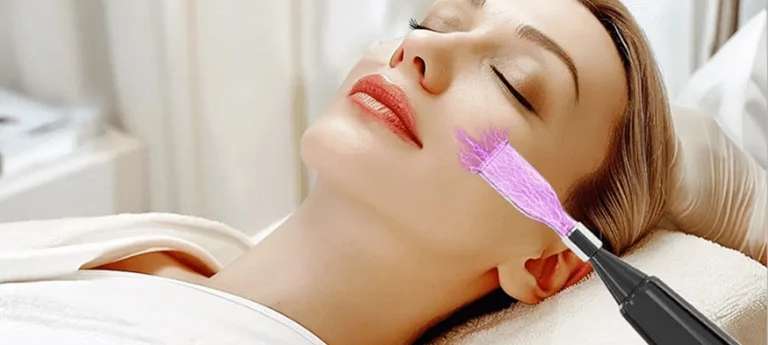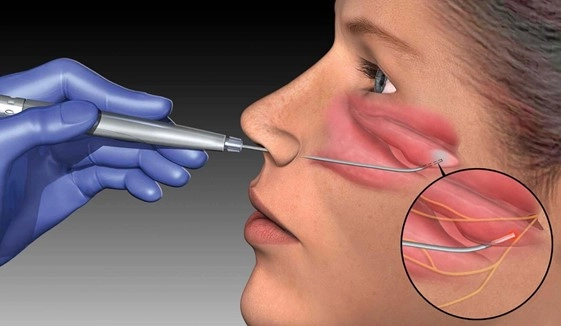810nm 980nm Veterinary diode laser machine for soft tissue cutting laser surgery laser therapy pain relief and physiotherapy Deep Tissue Laser 980nm Wound Healing Laser Therapeutic Device

Laser therapy for veterinary deep tissue treatment with 980nm 810nm:
The near-infrared 980 nm light penetrates deeply, reaching skin and soft tissues, minimizing absorption by melanin and water compared to other wavelengths.
Photons are absorbed by mitochondrial chromophores (e.g., cytochrome C oxidase), boosting ATP production—this supports cellular activity, tissue repair, and regeneration.
The 980 nm veterinary physiotherapy laser works by delivering near-infrared energy that stimulates cellular repair, reduces inflammation, and relieves pain. In veterinary practices, it is widely used for acute and chronic musculoskeletal injury, postoperative wound care, pain management, and dermatologic conditions—offering clients a quick, safe, and drug-free adjunct therapy with visible benefits in just a few sessions. Research continues to refine optimal dosing, but clinical and anecdotal evidence already supports its growing role in modern veterinary physiotherapy.
Physiological Effects for the 810nm 980nm Veterinary diode laser:
Anti-inflammatory: Reduces pro-inflammatory mediators and swelling
Analgesic: Promotes endorphin release and blocks pain transmission, plus muscle relaxation
Regenerative: Enhances microcirculation, collagen synthesis, wound healing, and new blood vessel formation

Clinical Applications in Veterinary laser therapy with 980nm 810nm:
- Pain Management & Inflammation
Used for osteoarthritis, hip dysplasia, tendonitis, intervertebral disc disease, and soft tissue injuries. Beside chronic cases, it’s often employed right after surgery or injury to ease acute pain and swelling
- Wound Healing & Post Surgical Recovery
Helps epithelialization and granulation, speeds closure of incisions, abscesses, and skin lacerations (common in orthopedics or dermatology)
- Musculoskeletal & Sports Medicine
Treats muscle strains, ligament sprains, fractures, and post-orthopedic repair rehab (e.g., cruciate ligament surgery)
- Neurological & Chronic Conditions
Supports nerve injuries, degenerative disc disease, and even some neurological pain syndromes
- Dermatologic & Other Indications
Addresses hotspots, lick granulomas, dermatitis; used also in pre‑dental/post‑dental pain relief, otitis, anal gland irritation

Laser surgery for veterinary with 810nm 980nm :
In pet cutting treatment, 980nm laser converts light energy into local high temperature through the efficient absorption of near-infrared light by water in biological tissues, achieving tissue vaporization and cutting; at the same time, it uses thermal coagulation to seal blood vessels and reduce bleeding and damage. Its core advantages lie in its accuracy, hemostasis ability and adaptability to narrow areas. It is a safe and efficient technical means in pet surgery (especially soft tissue surgery).
980nm technology. Laser surgery is used to burn, cut or destroy tissue in a very precise way.
Low-level laser is a different type of laser application which involves the use of low power. It is used to alter the cell function without destroying the tissue for soft tissue rehabilitation.
Laser surgery has been used for years in human medicine, dermatology in particular, as an alternative to surgical procedures. This is especially true for cosmetic surgery. In veterinary medicine, laser surgery is used for a variety of superficial (cutaneous) lesions.
Clinical Applications in Veterinary laser therapy Therapeutic Device
1.Skin and body surface tumors/vegetation removal
Benign tumors: such as lipoma, sebaceous adenoma, skin growths, etc. (common in middle-aged and elderly dogs and cats).
Malignant tumors: such as squamous cell carcinoma of the skin, basal cell tumor (especially in exposed parts such as the nose and ears of dogs).
Lesions in special parts: such as small tumors or hyperplastic tissues in sensitive areas such as the eyelid margin, nose mirror, and foot pads.
2.Oral and pharyngeal surgery
Oral diseases: gingival hyperplasia, oral ulcer debridement, small tumor/foreign body removal on the tongue, gingivitis with hyperplastic tissue removal in dogs and cats.
Throat: tonsillar hyperplasia, pharyngeal polyps
3.Minimally invasive eye and facial surgery
Eye: Correction and removal of entropion/ectropion.
Face: Infections in facial folds
4.Anal and reproductive system surgery
Anal diseases: removal of anal gland cysts, anal fistulas, and anal gland tumors.
Reproductive system: removal of ovaries in female cats, trimming of prepuce in male dogs, removal of vulvar hyperplasia

Advantage of diode laser for veterinary wound healing laser:
Minimally Invasive:
Diode lasers allow for minimally invasive procedures and less tissue damage than traditional surgeries.
Relieve Pain:
Diode lasers seal nerve endings as they cut, which reduces pain and discomfort during and after surgery and can be used for postoperative recovery and physical therapy.
Accelerate Healing:
The focused energy of diode lasers promotes faster healing of wounds and surgical incisions.
Reduce Bleeding:
Diode lasers cauterize blood vessels as they work, minimizing bleeding, which is particularly beneficial during delicate surgeries.
Versatility:
They can be used on a variety of animals, including dogs, cats, horses, and exotic pets, for both physiotherapy and surgical purposes.
FAQ
- Which is better for cutting, diode laser or CO2 laser?
In the field of soft tissue cutting (such as precise operations in surgery or treatment), the advantages and disadvantages of the two depend on specific needs:
CO2 laser on soft tissue cutting use:
Advantages: extremely high absorption rate of water, high cutting accuracy, suitable for superficial tissues, such as fine cutting of skin and mucous membranes, and can coagulate and stop bleeding simultaneously.
Limitations: obvious thermal damage, which may prolong wound healing time; and requires complex optical system transmission, low flexibility.
Diode laser on soft tissue cutting use:
Advantages: higher absorption rate, higher removal efficiency, pulse mode reduces thermal damage.
Can be transmitted through optical fiber, compatible with endoscopes, suitable for deep or narrow areas such as the mouth and throat.
Limitations: stronger absorption of hemoglobin and melanin, which may affect the hemostasis effect.
In general: surgical cutting: CO2 laser is more suitable for superficial fine cutting such as laryngeal tumors, while diode laser is suitable for deep operations with high efficiency and low thermal damage.
- Contraindications
Contraindications and precautions for laser therapy for pets include
Absolute contraindications:
Eye exposure: If the laser beam is directly irradiated into the eye, it will penetrate the cornea and pupil, project onto the retina through the lens, and cause irreversible damage. Special protective glasses must be worn.
Active bleeding sites: The vasodilation effect of the laser may aggravate bleeding.
Malignant tumors: There is a lack of clear evidence to support its safety. It may stimulate residual cancer cells, and postoperative margins should be used with caution.
Situations that require caution:
Reproductive organs (testicles/ovaries):High-dose irradiation may affect spermatogenesis or hormone levels. Low doses or avoidance are recommended.
Thyroid area: Long-term high-dose irradiation may interfere with thyroid function.
Epiphysis/unclosed fontanelles of young animals: May interfere with bone development.
Pregnant animals: Safety is not clear, and it is recommended to avoid.



